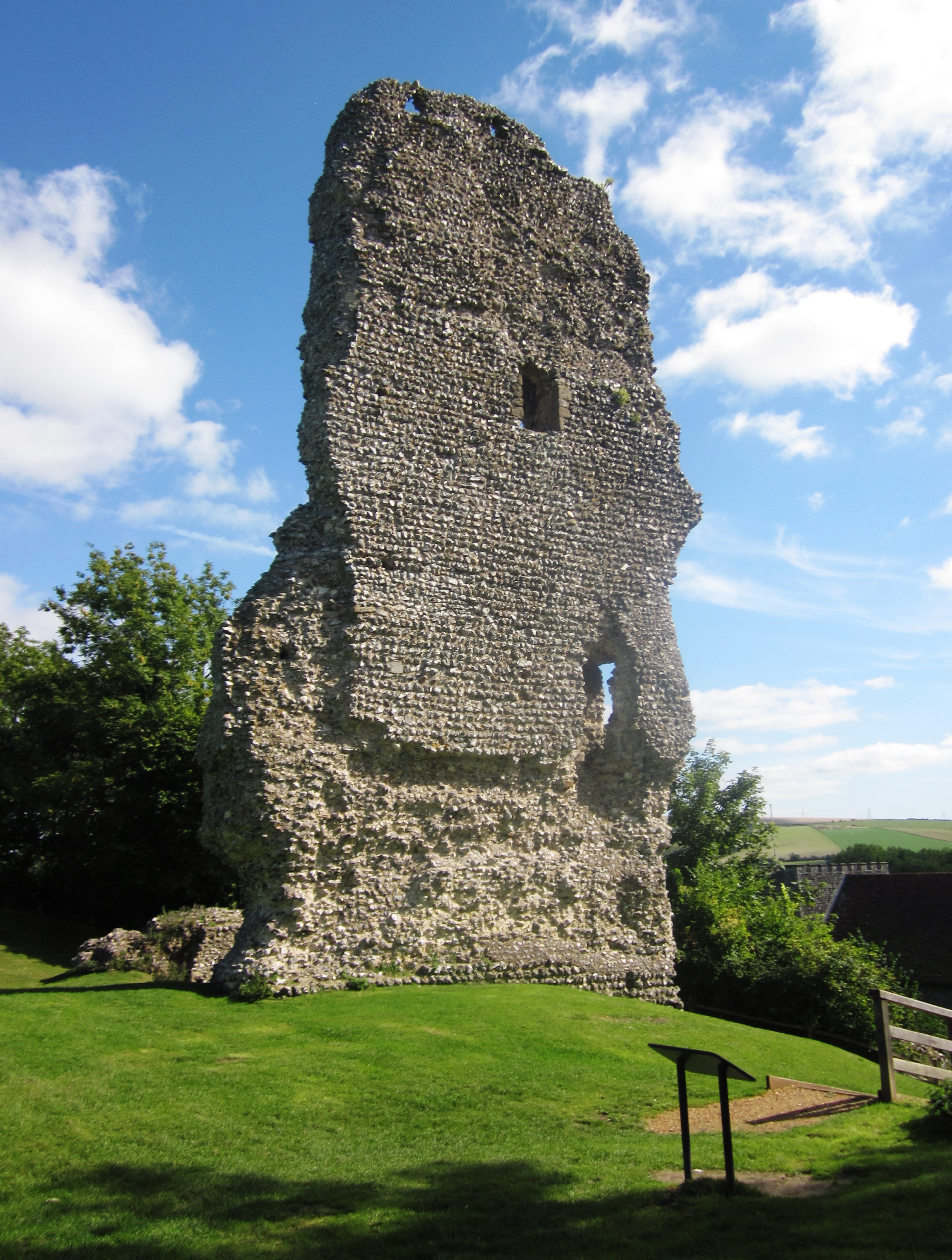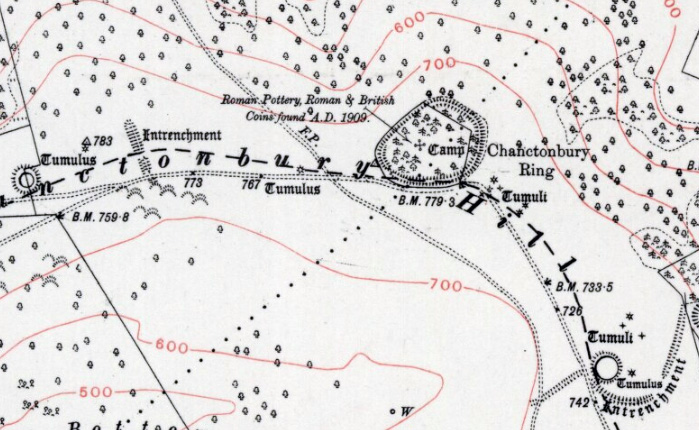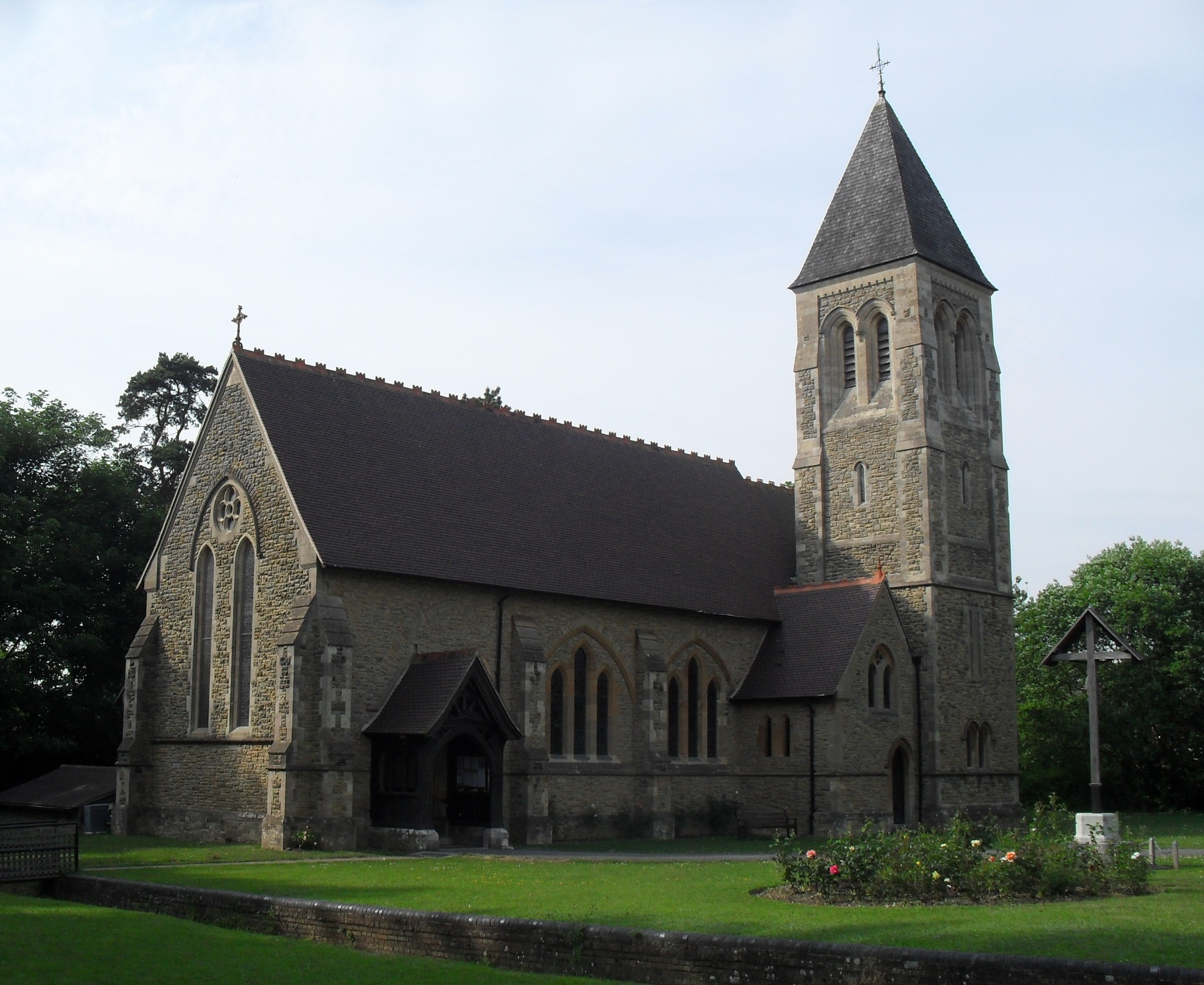|
Rape Of Bramber
The Rape of Bramber (also known as Bramber Rape) is one of the rapes, the traditional sub-divisions unique to the historic county of Sussex in England. It is the smallest Sussex rape by area. Bramber is a former barony whose original seat was the castle of Bramber and its village, overlooking the river Adur. History Created by William the Conqueror in the late 11th century, the rape of Bramber was separated out of the neighbouring rapes of Arundel and Lewes and entrusted to one of his knights, William de Braose, 1st Lord of Bramber. It was inserted so William de Braose could defend the Adur estuary, and a re-allocation of land to existing rapal owners became necessary. In 1208, King John confiscated the Braose lands, taking them under royal control. In population terms, the smallest of the three rapes making up Sussex's western division, its population in 1801 was 19,203, rising to 22,777 in 1811 and 30,113 in 1831. Location The rape of Bramber is a strip of territory ru ... [...More Info...] [...Related Items...] OR: [Wikipedia] [Google] [Baidu] |
Bramber Castle
Bramber Castle is a Normans, Norman motte-and-bailey castle formerly the ''caput'' of the large English feudal barony, feudal barony of Bramber long held by the House of Braose, Braose family. It is situated in the village of Bramber, West Sussex, near the town of Steyning, overlooking the River Adur. History Surveys indicate the Norman conquest of England, Normans were the first to build a fortification in the area, around 1070. It served as the administrative hub of the newly created Rape of Bramber, and controlled the River Adur estuary. The castle was held by William de Braose, 1st Lord of Bramber, whose family originated from Falaise, Calvados, Falaise. Except for a short period when it was confiscated by John of England, King John (1199–1216), the castle remained in the House of Braose, de Braose family, until the male line died out in 1326, and it passed to the House of Mowbray, Mowbrays. Bramber was one of the poorest parts of Sussex, and while it remained a centre o ... [...More Info...] [...Related Items...] OR: [Wikipedia] [Google] [Baidu] |
Rape Of Lewes
The Rape of Lewes (also known as Lewes Rape) is one of the rapes, the traditional sub-divisions unique to the historic county of Sussex in England. Location The rape of Bramber lies to its west and the rape of Pevensey lies to its east. The north the rape is bounded by the county of Surrey and to the south by the English Channel. The rape of Lewes includes the city of Brighton and Hove in its south-west corner, as well as the towns of Burgess Hill, Haywards Heath, Lewes, Newhaven and Seaford. At tall, its highest point is Ditchling Beacon on the South Downs. History According to John Morris the boundary between the Rapes of Lewes and Pevensey, which cuts through the middle of Lewes, probably pre-dates the founding of the town of Lewes in the late 9th or early 10th century. If one boundary had existed so early then it is quite possible that other boundaries also existed, and the Rape of Lewes, or its precursor, may have existed at this time. Ditchling may have bee ... [...More Info...] [...Related Items...] OR: [Wikipedia] [Google] [Baidu] |
Archdeaconry Of Lewes
The Archdeacon of Hastings is a senior ecclesiastical officer in the Church of England Diocese of Chichester. The Diocese of Chichester almost exactly covers the counties of East and West Sussex and the City of Brighton and Hove, stretching for nearly a hundred miles (160 km) along the south coast of England. History The two original archdeaconries of Chichester diocese, Chichester and Lewes, were created in the 12th century – at around the time when archdeacons were first appointed across England. The third archdeaconry, Hastings, was created (from that of Lewes) on 28 June 1912. The archdeaconries were then reorganised under Eric Kemp ( Bishop of Chichester) on 28 June 1975: the Hastings archdeaconry was dissolved and her territory returned to Lewes archdeaconry, which was renamed "Lewes & Hastings"; and a new archdeaconry of Horsham was created. On 12 May 2014, it was announced that the diocese is to take forward proposals to create a fourth archdeaconry (presently ... [...More Info...] [...Related Items...] OR: [Wikipedia] [Google] [Baidu] |
Archdeacon Of Chichester
The post of Archdeacon of Chichester was created in the 12th century, although the Diocese of Sussex was founded by St Wilfrid, the exiled Bishop of York, in AD 681. The original location of the see was in Selsey. The see was moved to Chichester, in about 1075, by decree of the Synod of London.Kelly. The Bishopric of Selsey ''in'' Mary Hobbs. Chichester Cathedral: An Historic Survey. pp.1 - 10 Currently, Luke Irvine-Capel is the Archdeacon (since May 2019). History After the Norman Conquest a uniform system of territorial archdeaconries was created to try to ensure that no settlement was more than a day's ride from the bishop's seat. In 1070 the Council of Windsor decreed that bishops should appoint archdeacons to their churches. The archdeacon acted as the bishop's deputy and representative and had the job of supervising parish churches in the diocese. Saint Richard, Bishop of Chichester in the 13th century, produced a body of statutes which included the duties of his arch ... [...More Info...] [...Related Items...] OR: [Wikipedia] [Google] [Baidu] |
Chanctonbury Ring
Chanctonbury Ring is a prehistoric hill fort atop Chanctonbury Hill on the South Downs, on the border of the civil parishes of Washington and Wiston in the English county of West Sussex. A ridgeway, now part of the South Downs Way, runs along the hill. It forms part of an ensemble of associated historical features created over a span of more than 2,000 years, including round barrows dating from the Bronze Age to the Saxon periods and dykes dating from the Iron Age and Roman periods. Consisting of a roughly circular low earthen rampart surrounded by a ditch, Chanctonbury Ring is thought to date to the late Bronze Age or early Iron Age. The purpose of the structure is unknown but it could have filled a variety of roles, including a defensive position, a cattle enclosure or even a religious shrine. After a few centuries of usage, it was abandoned for about five hundred years until it was reoccupied during the Roman period. Two Romano-British temples were built in the hill fort's ... [...More Info...] [...Related Items...] OR: [Wikipedia] [Google] [Baidu] |
Lowfield Heath
Lowfield Heath is a former village within the boundaries of the Borough of Crawley, West Sussex, England. Situated on the main London to Brighton road approximately south of London and north of Crawley, it was gradually rendered uninhabitable by the expansion of London Gatwick Airport immediately to the north. Houses and village amenities were steadily demolished between the 1950s and the 1970s, and only one original building – St Michael and All Angels Church, built in 1867 – remains, although there are various buildings on the site which serve the airport. The village took its name from an area of heathland of the same name, parts of which still survive, and a few houses and farms away from the old village centre survive and are still described as being in Lowfield Heath. A windmill stood in the area until it was moved to nearby Charlwood in 1987, and is also still referred to as the Lowfield Heath windmill. Origins A large area of common land, consisting of heat ... [...More Info...] [...Related Items...] OR: [Wikipedia] [Google] [Baidu] |
Ifield, West Sussex
Ifield is a former village and now one of 14 neighbourhoods within the town of Crawley in West Sussex, England. Ifield is in the west of the town and is bordered by Ifield West, Horsham, Langley Green to the north east, West Green to the east across the ring road and Gossops Green and Bewbush to the south across the Arun Valley railway line. History The name Ifield is derived from "Yew-field". There were many Yew trees in the parish, and some can be seen in the churchyard of St Margaret's Church. Ifield contains some of the most historic parts of Crawley, and there is a mention in the Domesday Book: "it is and was worth 20 shillings", where Ifield was spelt Ifelt. Locally there is much evidence of Saxon iron works and a stretch of Roman Road still exists today known locally as the "Quarter Mile". St Margaret's Church was built in the 13th century. It contains both the grave of Mark Lemon (the first editor of ''Punch''), and the Holles family vault. Adjacent to St Marg ... [...More Info...] [...Related Items...] OR: [Wikipedia] [Google] [Baidu] |
Crawley
Crawley () is a large town and borough in West Sussex, England. It is south of London, north of Brighton and Hove, and north-east of the county town of Chichester. Crawley covers an area of and had a population of 106,597 at the time of the 2011 Census. The area has been inhabited since the Stone Age, and was a centre of ironworking in Roman times. Crawley developed slowly as a market town from the 13th century, serving the surrounding villages in the Weald. Its location on the main road from London to Brighton brought passing trade, which encouraged the development of coaching inns. A rail link to London opened in 1841. Gatwick Airport, nowadays one of Britain's busiest international airports, opened on the edge of the town in the 1940s, encouraging commercial and industrial growth. After the Second World War, the British Government planned to move large numbers of people and jobs out of London and into new towns around South East England. The New Towns Act 1946 desig ... [...More Info...] [...Related Items...] OR: [Wikipedia] [Google] [Baidu] |
Worthing
Worthing () is a seaside town in West Sussex, England, at the foot of the South Downs, west of Brighton, and east of Chichester. With a population of 111,400 and an area of , the borough is the second largest component of the Brighton and Hove built-up area, the 15th most populous urban area in the United Kingdom. Since 2010, northern parts of the borough, including the Worthing Downland Estate, have formed part of the South Downs National Park. In 2019, the Art Deco Worthing Pier was named the best in Britain. Lying within the borough, the Iron Age hill fort of Cissbury Ring is one of Britain's largest. The recorded history of Worthing began with the Domesday Book. It is historically part of Sussex in the rape of Bramber; Goring, which forms part of the rape of Arundel, was incorporated in 1929. Worthing was a small mackerel fishing hamlet for many centuries until, in the late 18th century, it developed into an elegant Georgian seaside resort and attracted the we ... [...More Info...] [...Related Items...] OR: [Wikipedia] [Google] [Baidu] |
Steyning
Steyning ( ) is a town and civil parish in the Horsham district of West Sussex, England. It is located at the north end of the River Adur gap in the South Downs, four miles (6.4 km) north of the coastal town of Shoreham-by-Sea. The smaller villages of Bramber and Upper Beeding constitute, with Steyning, a built-up area at this crossing-point of the river. Demography The parish has a land area of . In the 2001 census 5,812 people lived in 2,530 households, of whom 2,747 were economically active. History Saxon Steyning has existed since Anglo-Saxon times. Legend has it that St Cuthman built a church, at one time dedicated to him, later to St Andrew, and now jointly to St Andrew and St Cuthman, where he stopped after carrying his mother in a wheelbarrow. Several of the signs that can be seen on entering Steyning bear an image of his feat. King Alfred the Great's father, Æthelwulf of Wessex, was originally buried in that church, before being transferred to Winches ... [...More Info...] [...Related Items...] OR: [Wikipedia] [Google] [Baidu] |
Shoreham-by-Sea
Shoreham-by-Sea (often shortened to Shoreham) is a coastal town and port in West Sussex, England. The town is bordered to its north by the South Downs, to its west by the Adur Valley and to its south by the River Adur and Shoreham Beach on the English Channel. The town lies in the middle of the ribbon of urban development along the English south coast, approximately equidistant from the city of Brighton and Hove to the east and the town of Worthing to the west. Shoreham covers an area of and has a population of 20,547 (2011 census). History Old Shoreham dates back to pre-Roman times. St Nicolas' Church, inland by the River Adur, is partly Anglo-Saxon in its construction. The name of the town has an Old English origin. The town and port of New Shoreham was established by the Norman conquerors towards the end of the 11th century. St Mary de Haura Church (St Mary of the Haven) was built in the decade following 1103 (the Domesday Book was dated 1086), and around this ... [...More Info...] [...Related Items...] OR: [Wikipedia] [Google] [Baidu] |
Horsham
Horsham is a market town on the upper reaches of the River Arun on the fringe of the Weald in West Sussex, England. The town is south south-west of London, north-west of Brighton and north-east of the county town of Chichester. Nearby towns include Crawley to the north-east and Haywards Heath and Burgess Hill to the south-east. It is the administrative centre of the Horsham district. History Governance Horsham is the largest town in the Horsham District Council area. The second, higher, tier of local government is West Sussex County Council, based in Chichester. It lies within the ancient Norman administrative division of the Rape of Bramber and the Hundred of Singlecross in Sussex. The town is the centre of the parliamentary constituency of Horsham, recreated in 1983. Jeremy Quin has served as Conservative Member of Parliament for Horsham since 2015, succeeding Francis Maude, who held the seat from 1997 but retired at the 2015 general election. Geography ... [...More Info...] [...Related Items...] OR: [Wikipedia] [Google] [Baidu] |







Apr2006.jpg)
